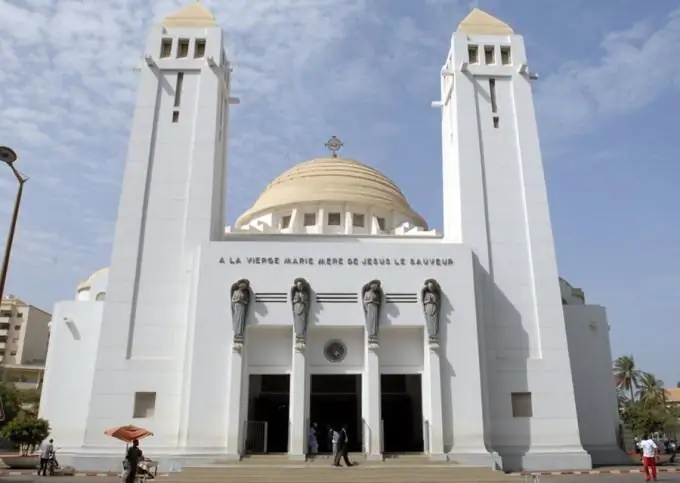- Author Antonio Harrison [email protected].
- Public 2023-12-16 07:44.
- Last modified 2025-01-22 21:44.
The capital of the Republic of Senegal in West Africa, Dakar, is located on the very shores of the Atlantic Ocean. The port city was founded by the French in 1857. In 1936, with the help of French specialists and donations from the French, the first Catholic church in Senegal was built, accommodating several hundred believers.

The history of the construction of the cathedral is closely connected with the name of the young French missionary Daniel Brotier, who, having arrived in Senegal in 1903, set out to convert the population to the Catholic faith. Daniel wanted to instill in black people the moral and spiritual values of Christian civilization. He was a real devotee. Despite his poor health, the missionary traveled to different places in Senegal, getting acquainted with the life of ordinary people. With its help, lonely children of Senegalese were assigned to shelters, given places in hospitals.
Brotier's father returned to France in 1907, took part in the First World War, but did not forget about Senegal. After the end of hostilities, he began to collect donations for the construction of a Catholic cathedral in Dakar. A few years later, the funds were donated to the Dakar people. The construction of the temple began in the 1920s and ended in 1936, the year of the death of Brotier's father.
The main architect of the cathedral was the Frenchman Charles Albert Wulflef, who had considerable experience in the construction of temples. He took the Greek cross as a basis, but designed the building by combining Byzantine and Muslim architectural styles. He got a temple with a Christian dome with a cross, and on the sides of the main entrance there were two bell towers, reminiscent of minarets.
For the facing of the temple and its interior decoration, marble from Tunisia, pink sandstone from Sudan, and hard varieties of red wood were used. The prayer hall is illuminated by 20 windows in a round dome. Everyone is allowed to enter the cathedral - both Catholics and Muslims.
The cathedral was consecrated in honor of the Virgin Mary. That is why it is called Notre Dame in French. The temple was restored in 2007. It was installed in an old French cemetery where French Catholics were buried.






